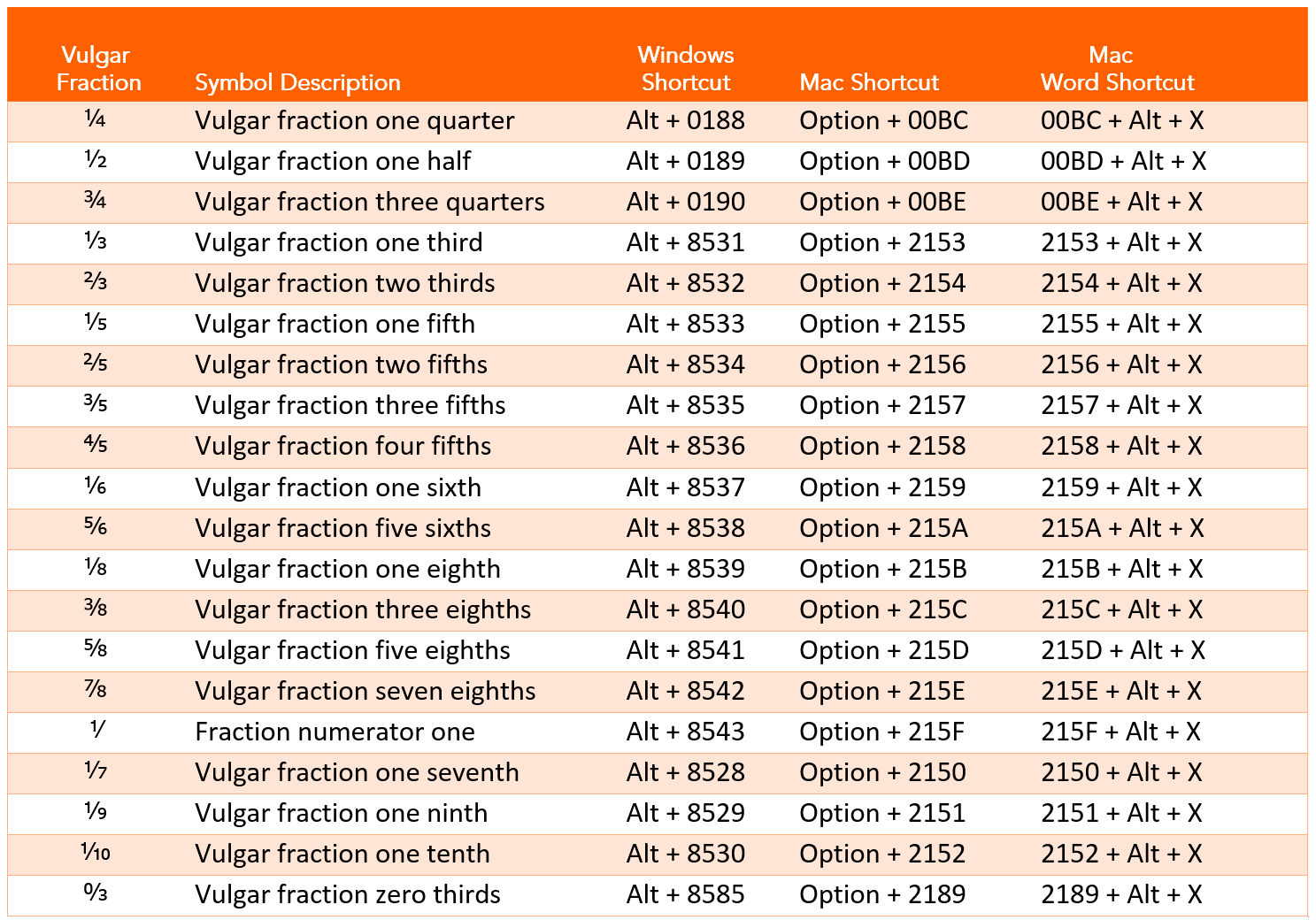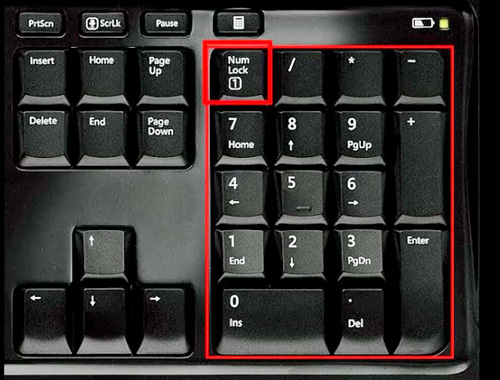Vulgar Fractions on the Fly

Have you ever had a project or a task where you needed to enter common fractions (numerator over denominator) instead of the decimal format? Undoubtedly the answer is “yes.” And I am pretty sure you wondered if there was some method of reproducing those fractions using your computer keyboard.

Yes, there is. Here is the complete list of keyboard combinations containing Unicode symbols for vulgar fractions. Shortcuts for both Windows and Macintosh are shown.

Typing fractions in Windows
Make sure your keyboard “Num Lock” is on. This setting allows you to use the number keys in conjunction with the “Alt” key.
To type the fraction, hold down the Alt key and type the number using the numeric keyboard.

Alt + X Method for Word Documents in Windows
Though the above method is easy, you need to have a keyboard with a separate numeric pad. If your keyboard does not have one, use the hexadecimal code in the “Mac Word Shortcut” column. Type the code using normal keys then press the Alt and X keys. For example, 2157 + Alt + X will produce the vulgar fraction three-fifths as ⅗. Use this method to enter any Unicode character, not just fractions.
Typing fractions on Macintosh
Mac users can enter the Unicode values directly by typing the options in hexadecimal. Use the Option key and hexadecimal code in the “Mac Shortcut” column of the above table to insert fractions. For example, pressing Alt + 00BE will produce the fraction ¾. However, you must first change the keyboard input method to Unicode Hex for this method to work. You may use this method to enter any Unicode character, not just fractions.
Why are they called vulgar fractions?
A vulgar fraction is one expressed as numerator and denominator. In other words, a common fraction. It does not imply that they are coarse or profane. It is an archaic expression from a time when the term had a different connotation.
Vulgar entered the English lexicon in the fourth century AD. It originally meant “common or ordinary use” and related to “ordinary people.” By the seventeenth century, it had begun to assume our modern senses of “lacking sophistication or good taste” and “making explicit and offensive reference to sex or bodily functions.”





Leave A Comment